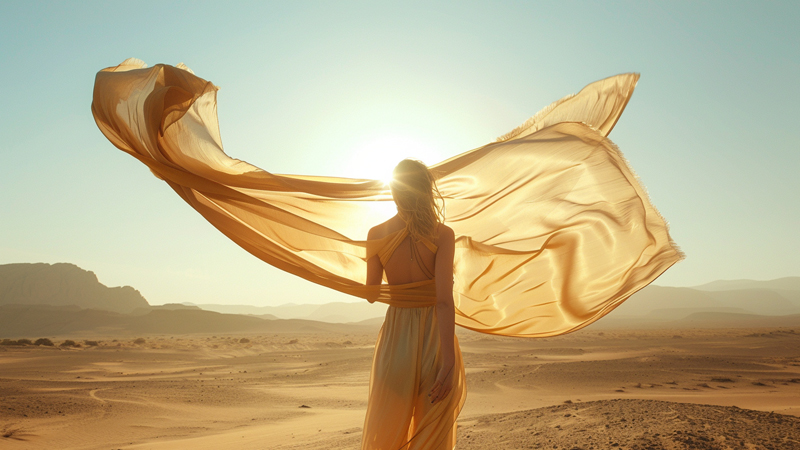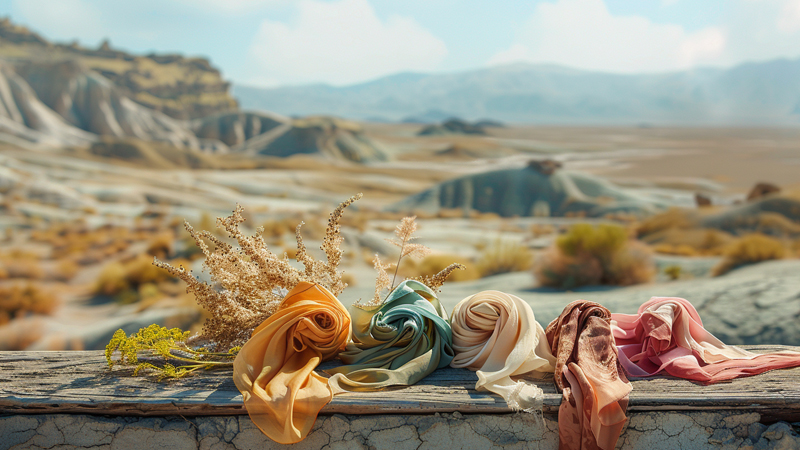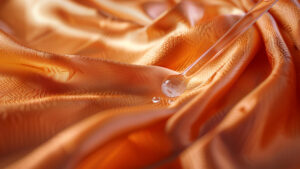
I wore my grandmother’s silk scarf through a 110°F desert afternoon last July—and it saved my sanity. Let me tell you why silk is summer’s secret weapon.
Silk scarves cool skin, block UV rays, and wick sweat in desert heat. Choose light colors, loose draping, and avoid synthetic blends for maximum comfort.
Trust me—it’s not just for fancy dinners.
What benefits does silk offer in hot climates like the desert?
Silk feels like second skin in the desert. I’ve hiked Joshua Tree in mine—no sweat rashes, no sunburn, just effortless comfort.
Silk reflects sunlight, regulates body temperature, and resists odor. Its natural fibers prevent irritation during extreme heat exposure.

Why silk beats cotton and synthetics
During a Phoenix heatwave, I tested three scarves:
- Cotton1 became a damp rag by noon
- Polyester2 trapped heat like plastic wrap
- Silk3 stayed dry and airy
The science? Silk’s protein structure creates tiny air pockets. These act like natural AC—cooling you when it’s hot, insulating when nights get chilly.
| Fabric | Desert Performance |
|---|---|
| Silk | Breathes, UV protection, odor-resistant |
| Cotton | Absorbs sweat, takes hours to dry |
| Synthetics | Traps heat, causes skin irritation |
I now pack two silk scarves for every desert trip. One for my neck, another tied to my backpack as an instant shade cloth.
How does silk provide breathability and comfort in the heat?
Silk’s magic lies in what it doesn’t do. Unlike my regrettable linen phase, it never sticks or chafes—even when I’m sweating buckets.
Silk fibers are hollow, allowing airflow while wicking moisture. It dries 3x faster than cotton, preventing that clammy feeling.

A day in the life of a desert scarf
6 AM: Draped loosely over shoulders during cool mornings
12 PM: Soaked in water and tied around my neck as a cooling wrap4
4 PM: Folded into a headband to block sweat5 from my eyes
9 PM: Worn as a shawl when temperatures plummet
Pro tip: Sprinkle water on your silk scarf6—it’ll stay cool for 20+ minutes. I call it “poor man’s air conditioning.”
What styling tips are best for wearing silk scarves in desert environments?
I once ruined a perfect outfit by tying my scarf too tight—learn from my mistakes. Desert style is about flow, not fuss.
Drape loosely around neck, tie ends under hairline, or wear as a turban. Avoid knots that trap heat against skin.

Surviving sandstorms in style
During a sudden Mojave sandstorm7, I:
- Wrapped the scarf over my nose/mouth
- Secured it with vintage souvenir sunglasses8
- Looked like a desert queen instead of a dust monster
For evening events, I fold mine into a triangle9 and pin it asymmetrically—lets my skin breathe while looking put-together.
How do you choose the right silk scarf for desert conditions?
Not all silk is created equal. My first scarf was cheap “silk-like” fabric—it disintegrated faster than ice cream in the sun.
Opt for 100% mulberry silk (19+ momme weight). Choose light colors (beige, pale blue) to reflect heat, not absorb it.

The $5 thrift store miracle
My favorite desert scarf cost less than a latte. Look for:
- Hand-rolled edges (prevents fraying)
- Faded patterns (means it’s been sun-tested)
- Slight sheen (indicates quality weave)
Avoid dark florals—they fade fast. My navy scarf turned milky gray after two desert trips. Now I stick to neutrals with subtle textures.
Conclusion
Silk scarves aren’t just survivable in desert heat—they’re the smartest, chicest way to stay cool. Grandma knew best.
-
Learn why cotton can be a poor choice in heat, especially in desert conditions, and discover better alternatives. ↩
-
Understand the issues with polyester in heat, including heat retention and skin irritation, to make informed fabric choices. ↩
-
Explore the unique properties of silk that make it ideal for hot climates, including breathability and UV protection. ↩
-
Learn about the science behind cooling wraps and how they can enhance comfort during hot weather. ↩
-
Explore the best materials for headbands that effectively block sweat and keep you comfortable during workouts. ↩
-
Discover the unique advantages of silk scarves, including their cooling properties and versatility in fashion. ↩
-
Understanding the effects of a Mojave sandstorm can help you prepare better for such events in the future. ↩
-
Explore unique vintage styles that can add character to your outfits and protect you from the elements. ↩
-
Learn different ways to style your scarf for various occasions, enhancing your fashion sense and versatility. ↩




